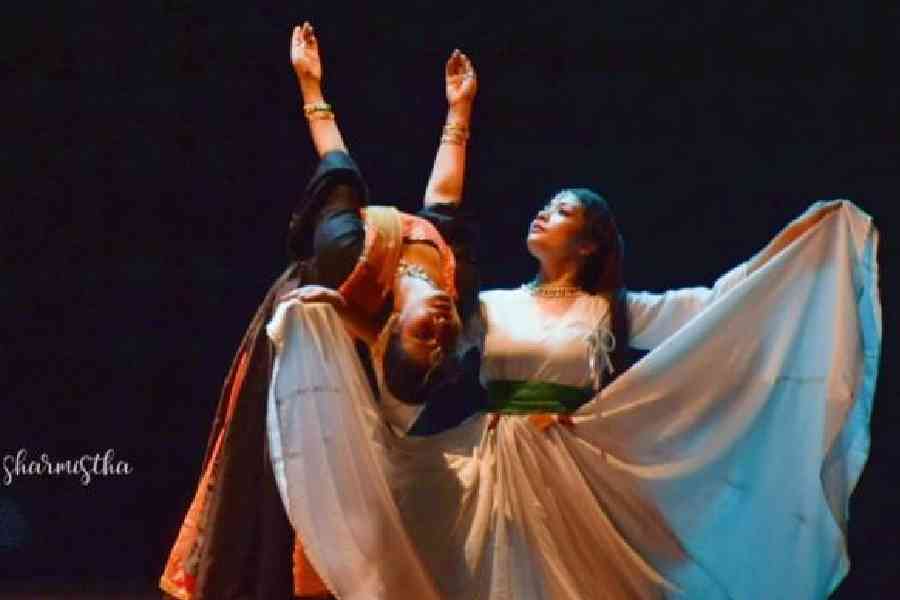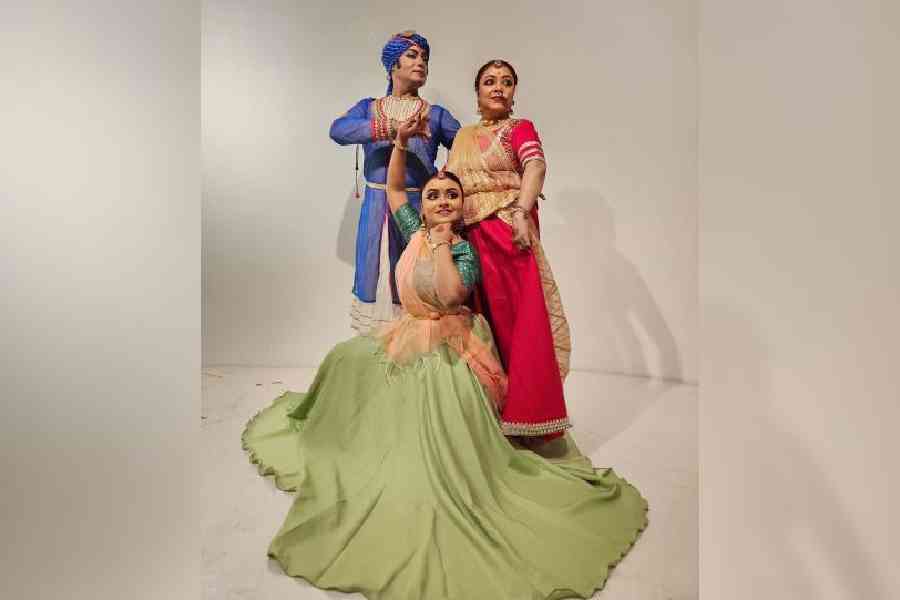The name, Kathak, comes from the word for story and, like all our classical dances, the form is increasingly being used to tell tales that are neither mythological nor repetitive to the point of being alienating for the audience. New narratives are being sought and their notations and concerns are becoming central to the choreography. However, newness is a lesser ideal than aesthetics. Such novelty for the sake of it does not always bode well for the work and can simply become an excuse for pretty dancing — or not — that is faithfully responsive to commonplace music in a traditional way and may or may not demonstrate skills. Two recent works presented in the city evoked thoughts about the middling values of such endeavours.

Staged at the Kolkata Centre for Creativity amphitheatre with support from the Anamika Kala Sangam Trust, Box of Tales (picture, left) aroused anticipation with a vibrantly designed Rajasthan-themed set that stood out against the largely white art gallery background of the venue. The kavads or boxes, which hold tales in the folds of their wooden panels waiting to be told, lay strewn across the performance floor. The space pulsated with the exciting possibilities of the kind of stories that might emerge from the kavads. What followed, however, was an utterly one-dimensional, paternalistic and regressive re-telling of the traditional tale of Dhola and Maru, the lovers who were separated by circumstances and eventually came together, thanks to the machinations of — who else but? — Prince Dhola. Princess Marul anguished in quiet surrender to gloom with a singular lack of agency. While trying to appeal to a broad audience through such devices of representation, efforts like this actually end up doing just the opposite. It seemed wrong that a bunch of young women should be part of a story that gave its female protagonist such little scope for intervention in the central narrative.
Although the choice of material was deeply problematic, the choreography, based on the effervescent Kathak of Jaipur Gharana, had the folksy joie de vivre of Rajasthan. Signs of Rajendra Gangani’s mentoring of the project were visible in some of the sequences. The ones involving horse riding, even though one wondered whether it should have been camel instead of horse, were evocative. The ‘kavad vachana’ or oral telling of the tale, done very effectively by Zahid Hossain through his well-honed craft, was one of the high points of the production. His act showed what an absorbing and clever multidisciplinary work it might have been if it had its politics right.
Another Kathak piece titled Safr-e-Ruhaniyat (picture, right) created by Ritusri Chaudhuri and presented at the ICCR auditorium along with live music attempted to establish a connection between the poetry of Mirza Ghalib and the emotions of the Nayikas. The Mugdha Nayika, Vasakasajjika and Vipralabdha were chosen, and associations with the text, tenuous at best, were sought rather unsuccessfully. In the absence of competent dramaturgy, what the work really amounted to was an excuse for creating a piece based on Ghalib’s ghazals. Even the dancing was mostly uninspired. The music was frustratingly insipid: none of the lyrical yearning of the verses was to be found in it.
While it is important to draw from texts to widen the scope of one’s art practice, a healthy dose of reflection on how to use it cannot be discounted.










